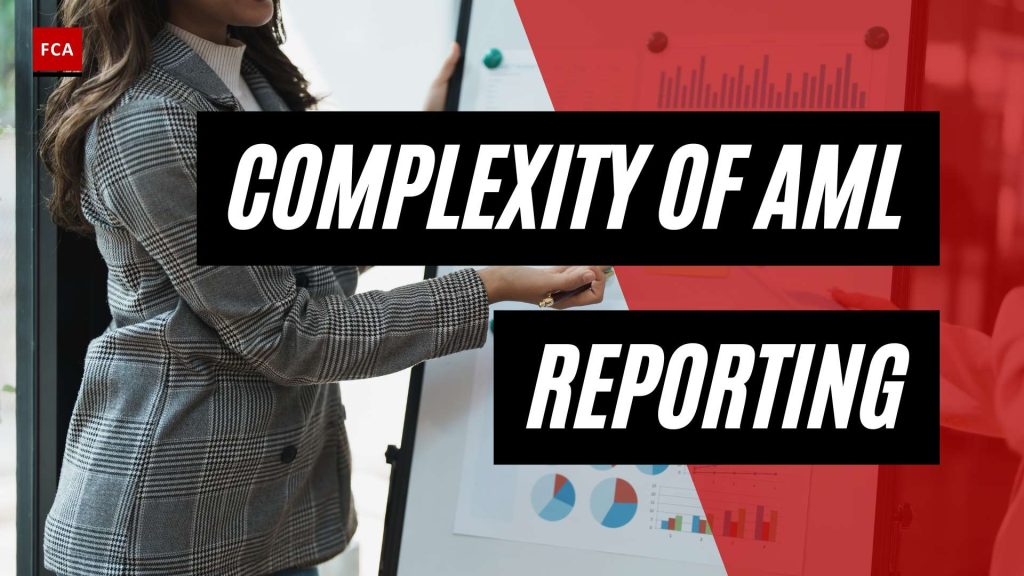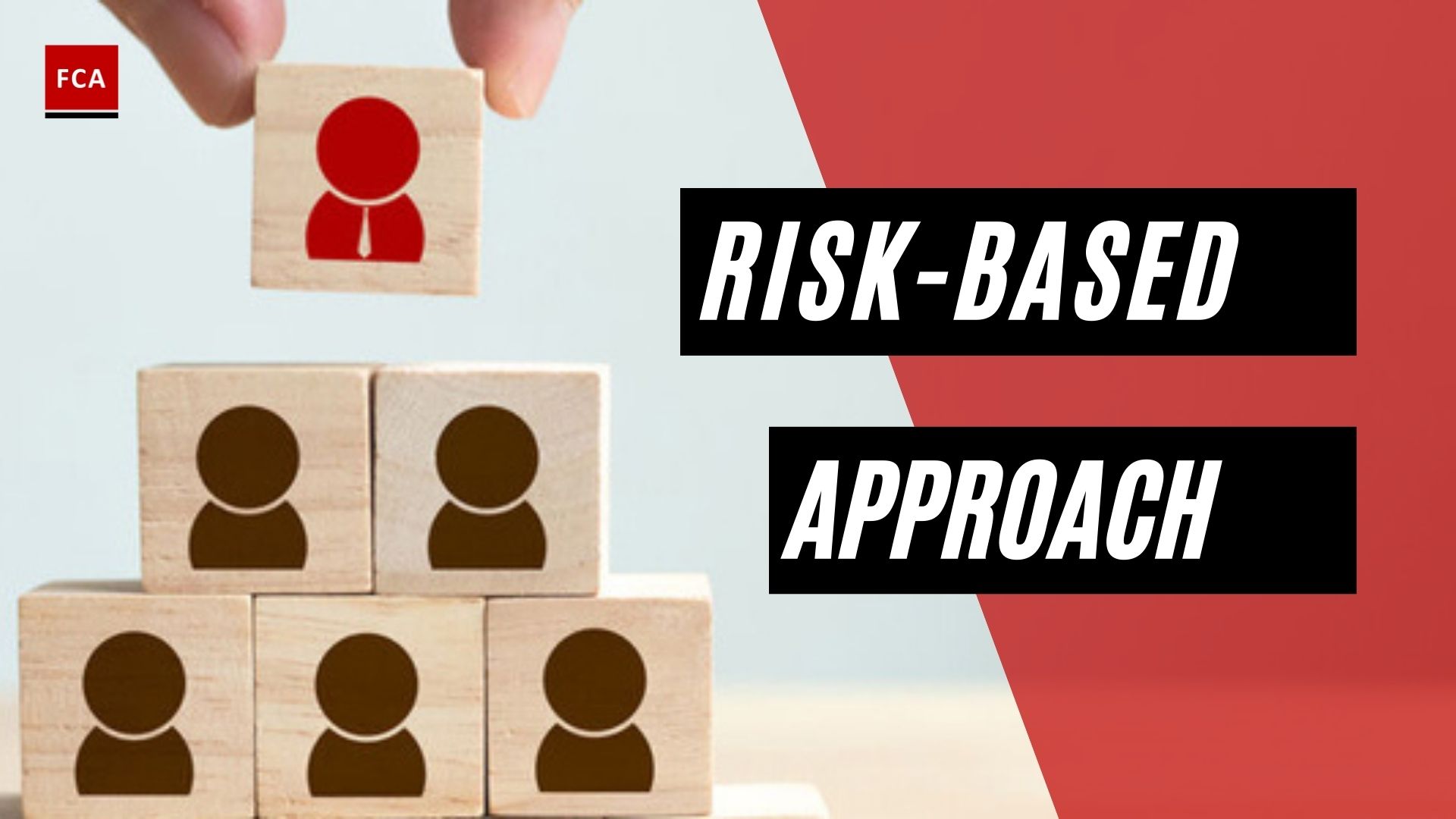AML Reporting Guidelines: An Overview
When it comes to combating financial crime, regulatory reporting requirements play a crucial role in ensuring transparency and accountability. Anti-Money Laundering (AML) reporting guidelines provide a framework for financial institutions to report suspicious activities, conduct risk assessments, and implement customer due diligence measures. In this section, we will explore the introduction to AML reporting and the importance of AML reporting guidelines.
Introduction to AML Reporting
AML reporting is a critical component of AML compliance programs implemented by financial institutions worldwide. These programs aim to detect and prevent money laundering and other illicit financial activities. AML reporting involves the timely identification, monitoring, and reporting of suspicious transactions or activities that may indicate potential money laundering or terrorist financing (Flagright).
Financial institutions are required to establish comprehensive AML compliance programs that include various elements such as risk assessments, suspicious activity reporting (SAR), and customer due diligence (CDD) requirements. These programs are shaped by regulatory reporting guidelines and frameworks set forth by global and regional regulatory bodies (Flagright).
Importance of AML Reporting Guidelines
AML reporting guidelines are of paramount importance in the fight against financial crime. They provide financial institutions with clear instructions on how to comply with regulatory reporting obligations and ensure that relevant information is reported to the appropriate authorities. By adhering to these guidelines, financial institutions can contribute to the prevention and detection of money laundering, terrorist financing, and other criminal activities.
The significance of AML reporting guidelines can be seen in the efforts made by regulatory bodies to establish comprehensive frameworks. For instance, the Financial Action Task Force (FATF) sets international standards and provides guidance on AML reporting to its member countries. Similarly, the European Union has introduced directives such as the Fourth and Fifth Anti-Money Laundering Directives, which outline reporting obligations for financial institutions operating within the EU. In the United States, the Bank Secrecy Act (BSA) and its amendments serve as the foundation for AML reporting requirements.
By adhering to AML reporting guidelines, financial institutions can enhance their ability to detect and report suspicious activities, minimize the risk of facilitating money laundering, and contribute to the overall integrity of the global financial system.
In the next sections, we will delve into the key components of AML reporting, the global perspective on AML reporting regulations, the role of technology in AML reporting, the consequences of non-compliance, and resources and updates related to AML reporting guidelines. Stay tuned for a comprehensive overview of AML reporting and its impact on financial institutions’ compliance efforts.
Key Components of AML Reporting
To effectively combat financial crime and ensure regulatory compliance, understanding the key components of Anti-Money Laundering (AML) reporting is essential. This section will explore three vital elements: risk assessment for AML reporting, suspicious activity reporting (SAR), and customer due diligence (CDD) requirements.
Risk Assessment for AML Reporting
A comprehensive risk assessment is the foundation of an effective AML compliance program. Financial institutions must conduct risk assessments to identify and evaluate the potential money laundering and terrorist financing risks they face. This assessment helps in tailoring AML programs to address the specific risks associated with their operations.
The risk assessment process involves analyzing various factors such as customer profiles, business activities, geographic locations, and transaction volumes. By considering these elements, institutions can determine the level of risk associated with different customers, products, and services. Regular review and updates of the risk assessment are crucial to ensure that AML programs remain responsive to evolving risks (Flagright).
Suspicious Activity Reporting (SAR)
Suspicious activity reporting (SAR) is a critical component of AML reporting. Financial institutions are required to establish procedures for identifying, monitoring, and reporting suspicious transactions that may be indicative of money laundering or terrorist financing activities.
When a potentially suspicious transaction is identified, it should be reported to the appropriate regulatory authorities in accordance with the reporting guidelines and regulations specific to each jurisdiction. The objective of SAR is to enable regulatory bodies to investigate and take appropriate action to combat financial crime.
Financial institutions must have robust systems and processes in place to detect and report suspicious activities. This includes implementing transaction monitoring systems, training employees to identify red flags, and having clear procedures for escalating and documenting suspicious transactions.
Customer Due Diligence (CDD) Requirements
Customer due diligence (CDD) is a fundamental obligation for financial institutions to verify the identity of their customers and assess the potential risks associated with their business relationships. CDD requirements vary across jurisdictions, but they generally involve obtaining and verifying customer identification information, understanding the nature of the customer’s activities, and assessing the source of their funds.
CDD requirements help financial institutions determine the level of risk associated with a customer and ensure compliance with regulatory obligations. Enhanced due diligence (EDD) may be required for customers deemed to pose higher risk, such as politically exposed persons (PEPs) or customers involved in high-value transactions.
By implementing robust CDD processes, financial institutions can better identify and mitigate the risks associated with money laundering and terrorist financing. Ongoing monitoring of customer relationships is also essential to detect any changes in risk profiles.
In summary, risk assessment, suspicious activity reporting (SAR), and customer due diligence (CDD) requirements are key components of AML reporting. Financial institutions must prioritize these components to effectively combat money laundering and ensure compliance with regulatory reporting obligations. By implementing strong risk management practices and adhering to robust reporting guidelines, institutions can contribute to global efforts to combat financial crime.
AML Reporting Regulations: Global Perspective
To combat money laundering and illicit financial activities, countries around the world have implemented regulatory frameworks that include specific AML reporting requirements. These regulations aim to ensure transparency, detect suspicious transactions, and prevent the misuse of the financial system for criminal purposes. Let’s explore some of the key AML reporting regulations from a global perspective.
Financial Action Task Force (FATF) Standards
The Financial Action Task Force (FATF) is widely recognized as the global standard-setter in anti-money laundering (AML) regulation. Since introducing its first set of AML recommendations in 1990, the FATF has played a crucial role in shaping AML reporting guidelines worldwide. Its recommendations, often referred to as the “FATF 40 recommendations,” have evolved over time to address emerging risks and new techniques used by money launderers (Fintech Global).
The FATF standards cover a wide range of areas, including risk assessment, customer due diligence (CDD), suspicious activity reporting (SAR), and the role of financial institutions in combating money laundering and terrorist financing. These standards provide a comprehensive framework for countries to develop their own AML reporting guidelines and ensure compliance with international best practices.
Anti-Money Laundering Directives in the European Union
In the European Union (EU), the fight against money laundering is governed by a series of Anti-Money Laundering Directives. The first directive was introduced in 1990 with the objective of preventing the financial system from being misused for money laundering purposes. Since then, the EU’s AML directives have undergone continuous revision to mitigate the risks associated with money laundering and terrorist financing (Sanction Scanner).
The most recent directive, the Fifth Anti-Money Laundering Directive (AMLD5), was adopted in 2018 and implemented in 2020. It introduced several important changes, including the expansion of the scope of AML regulations to cover virtual currencies and the establishment of central registers for beneficial ownership information. The EU is currently preparing the sixth Anti-Money Laundering Regulation, which will further strengthen the AML framework in the region.
Bank Secrecy Act (BSA) in the United States
In the United States, the fight against money laundering is primarily governed by the Bank Secrecy Act (BSA). Enacted in 1970, the BSA remains one of the most important tools in the fight against money laundering. It establishes requirements for financial institutions to assist government agencies in detecting and preventing money laundering and other financial crimes (Sanction Scanner).
Over time, the BSA has been amended by various legislation to enhance its effectiveness in combating money laundering. It requires financial institutions to establish comprehensive AML compliance programs, conduct customer due diligence (CDD), and file reports such as Currency Transaction Reports (CTRs) and Suspicious Activity Reports (SARs). The Financial Crimes Enforcement Network (FinCEN) is the designated administrator of the BSA and plays a key role in overseeing AML compliance in the United States.
By adhering to these global AML reporting regulations, financial institutions and other reporting entities can contribute to the collective effort to combat money laundering and protect the integrity of the global financial system. It is essential for organizations to stay updated on regulatory changes and ensure compliance with the AML reporting guidelines specific to their jurisdiction.
Technology and AML Reporting
In the ever-evolving landscape of anti-money laundering (AML) regulation and compliance, technology plays a crucial role in enhancing the effectiveness and efficiency of AML reporting processes. Financial institutions have increasingly turned to technology-driven solutions to combat money laundering crimes and mitigate associated risks. By adopting advanced AML solutions supported by artificial intelligence (AI) and machine learning, institutions can save time, keep up with changing regulations, and minimize the risks associated with money laundering activities (Sanction Scanner).
Role of Technology in AML Reporting
Technology has revolutionized the AML reporting landscape, helping financial institutions streamline their compliance efforts and improve their overall risk management strategies. Here are some key contributions of technology in AML reporting:
-
Automation of Manual Processes: Technology enables the automation of labor-intensive manual processes involved in AML reporting, such as data collection, analysis, and reporting. This automation not only saves time but also reduces the risk of human error, ensuring greater accuracy and consistency in compliance reporting.
-
Enhanced Data Analysis: Big data analytics and AI-driven solutions empower financial institutions to analyze vast amounts of data quickly and effectively. By leveraging these technologies, institutions can detect patterns, identify suspicious activities, and generate actionable insights to strengthen their AML compliance efforts. This advanced data analysis helps institutions stay one step ahead of potential money laundering activities.
-
Real-time Monitoring: Technology enables real-time monitoring of transactions and customer activities, allowing financial institutions to promptly identify and investigate suspicious transactions. Real-time monitoring helps mitigate risks associated with money laundering by enabling timely intervention and reporting.
-
Improved Risk Assessment: Technology-driven solutions facilitate more accurate and comprehensive risk assessment processes. By leveraging AI and machine learning algorithms, financial institutions can analyze customer data, transaction patterns, and external risk indicators to assess the level of AML risk associated with specific customers or transactions. This enables institutions to allocate their resources more effectively and focus on high-risk areas.
Automated Solutions for AML Compliance
Automated solutions designed specifically for AML compliance have become increasingly prevalent in the financial industry. These solutions leverage cutting-edge technology to streamline and enhance AML reporting processes. Here are some examples of automated solutions used for AML compliance:
-
Transaction Monitoring Systems: Transaction monitoring systems employ advanced algorithms to analyze customer transactions in real-time, flagging any potentially suspicious activities. These systems enable financial institutions to identify unusual patterns, detect potential money laundering activities, and generate suspicious activity reports (SARs) as required by regulatory reporting obligations.
-
Customer Due Diligence (CDD) Solutions: CDD solutions leverage technology to automate the process of collecting, verifying, and validating customer information. These solutions employ AI and machine learning to assess customer risk profiles, perform enhanced due diligence, and ensure compliance with customer identification requirements.
-
Know Your Customer (KYC) Solutions: KYC solutions help financial institutions verify the identity of their customers, assess their risk levels, and comply with regulatory KYC requirements. These solutions utilize technology to streamline the customer onboarding process, perform identity checks, and facilitate ongoing monitoring to detect any changes in customer risk profiles.
By leveraging these automated solutions, financial institutions can enhance their AML reporting capabilities, improve compliance efficiency, and reduce the risk of regulatory non-compliance.
As technology continues to advance, financial institutions must remain vigilant in adopting and adapting to new technologies to stay ahead of money laundering risks. However, it is important to note that technology should be used in conjunction with human expertise and oversight to ensure that AML reporting remains accurate, reliable, and in compliance with regulatory requirements.
Consequences of Non-Compliance with AML Reporting
Ensuring compliance with AML reporting guidelines is crucial for organizations to combat money laundering and terrorist financing effectively. Failing to meet these requirements can result in significant consequences. In this section, we will explore three key consequences of non-compliance: administrative monetary penalties (AMPs), disclosure of non-compliance information, and the potential for criminal charges.
Administrative Monetary Penalties (AMPs)
Regulatory bodies, such as FINTRAC, have the authority to impose administrative monetary penalties (AMPs) on reporting entities that fail to comply with AML reporting obligations. These penalties serve as a deterrent and incentivize organizations to prioritize AML compliance. AMPs are typically imposed based on the severity and frequency of non-compliance.
According to FINTRAC guidelines, AMPs are determined using harm done assessment guides. These guides assess the harm done criterion and establish the base penalty amount for violations under the Proceeds of Crime (Money Laundering) and Terrorist Financing Act and its regulations. The specific penalty amount depends on various factors, including the nature and duration of the non-compliance (FINTRAC).
It’s important to note that AMPs imposed by regulatory bodies are made public to ensure transparency in the enforcement of regulations. This public disclosure serves as a reminder to organizations about the seriousness of non-compliance (FINTRAC).
Disclosure of Non-Compliance Information
Regulatory bodies have the authority to disclose information related to non-compliance if there are reasonable grounds to suspect its relevance for investigating or prosecuting a non-compliance offense. This includes instances where non-compliance is identified by the regulatory body or when voluntary information on non-compliance is received from law enforcement (FINTRAC).
The disclosure of non-compliance information serves multiple purposes. It helps to raise awareness about the consequences of non-compliance, encourages organizations to strengthen their AML programs, and allows law enforcement agencies to take appropriate actions against offenders. Organizations must understand the importance of maintaining compliance to avoid potential reputational damage and legal consequences.
Criminal Charges for AML Offences
Failure to comply with AML reporting regulations can lead to criminal charges for non-compliance offenses. Organizations and individuals may be subject to prosecution under the relevant legislation, such as the Proceeds of Crime (Money Laundering) and Terrorist Financing Act. Criminal charges highlight the seriousness of non-compliance and the potential legal ramifications that can arise from failing to meet AML reporting obligations.
To mitigate the risk of criminal charges, organizations must prioritize the development and implementation of robust AML compliance programs. These programs should include comprehensive policies and procedures, regular training and awareness programs, and thorough monitoring and reporting mechanisms.
Understanding the consequences of non-compliance with AML reporting guidelines is essential for organizations operating in regulated industries. By adhering to these guidelines, organizations can effectively combat money laundering and terrorist financing, protect their reputation, and contribute to the overall integrity of the financial system.
AML Reporting Guidelines: Resources and Updates
Staying up to date with the latest AML reporting guidelines is crucial for organizations and professionals working in compliance, risk management, anti-money laundering, and anti-financial crime. Regulatory bodies provide valuable resources and updates to ensure compliance with evolving regulations. In this section, we will explore the role of the Federal Deposit Insurance Corporation (FDIC) and the Financial Industry Regulatory Authority (FINRA) in providing AML reporting resources, as well as the guidance available from regulatory bodies.
FDIC’s Role in AML Reporting Guidelines
The Federal Deposit Insurance Corporation (FDIC) plays a significant role in overseeing and regulating the banking sector in the United States. As part of its responsibilities, the FDIC publishes regular updates on news and activities related to AML reporting guidelines. These updates provide valuable information about policy changes and regulatory developments that impact banks and their compliance obligations.
The FDIC is committed to educating and informing stakeholders on compliance issues in the banking industry. They conduct events and publish reports to provide guidance and promote understanding of AML reporting guidelines. For example, an event conducted by the FDIC on November 29, 2023, focused on AML reporting guidelines, demonstrating their dedication to keeping stakeholders informed (FDIC).
By leveraging the resources provided by the FDIC, professionals can stay informed about the latest AML reporting guidelines and ensure compliance with reporting obligations. The FDIC’s commitment to maintaining stability and public confidence in the financial system is reflected in their dedication to providing valuable resources to the banking industry.
FINRA’s AML Reporting Resources
The Financial Industry Regulatory Authority (FINRA) is a regulatory body that oversees brokerage firms and professionals in the United States. While primarily focused on securities regulation, FINRA also provides resources and guidance related to AML reporting.
FINRA offers AML reporting resources to help professionals in the securities industry understand their compliance obligations. These resources may include guidelines, training materials, and updates on regulatory changes. By accessing FINRA’s AML reporting resources, professionals can enhance their knowledge and ensure adherence to the reporting requirements specific to their industry.
As AML regulations evolve and new reporting guidelines are introduced, FINRA remains committed to providing the necessary resources to help professionals navigate the complex landscape of AML compliance.
AML Reporting Guidance from Regulatory Bodies
In addition to the specific resources provided by the FDIC and FINRA, various regulatory bodies offer guidance on AML reporting. These bodies include national and international organizations responsible for setting standards and promoting regulatory compliance.
Regulatory bodies such as the Financial Action Task Force (FATF) and the European Union (EU) provide comprehensive guidance on AML reporting requirements. The FATF sets global standards and promotes effective implementation of measures to combat money laundering and terrorist financing. The EU has its own directives and regulations that member states must adhere to, including guidelines specific to AML reporting.
By referring to the guidance provided by these regulatory bodies, organizations and professionals can ensure they are meeting the necessary AML reporting requirements relevant to their jurisdiction.
Keeping abreast of the resources and updates provided by regulatory bodies is essential for maintaining compliance with AML reporting guidelines. Organizations and professionals should regularly consult the FDIC, FINRA, and other relevant regulatory bodies to access the latest information, guidance, and resources for effective AML reporting.
Building an Effective AML Reporting Program
To ensure compliance with anti-money laundering (AML) regulations and meet regulatory reporting requirements, organizations must establish a robust AML reporting program. This section focuses on three key components of building an effective program: designating responsibility for AML compliance, developing policies and procedures for AML reporting, and providing training and awareness for AML compliance.
Designating Responsibility for AML Compliance
Designating an individual or team responsible for overseeing AML compliance is the first step in setting up an effective AML reporting program. This person, often referred to as the Chief AML Officer, plays a pivotal role in developing and implementing policies, procedures, training, and necessary tools to ensure compliance with AML regulations (CPA Canada).
By assigning clear responsibilities, organizations demonstrate their commitment to maintaining a strong AML compliance culture. The designated individual or team should have the necessary expertise and authority to drive the AML reporting program forward, monitor compliance, and respond to any emerging issues.
Policies and Procedures for AML Reporting
Written policies and procedures are the cornerstone of an effective AML reporting program. These documents outline how people, processes, and systems collaborate to meet AML reporting obligations and allocate resources effectively (CPA Canada).
AML policies and procedures should cover various aspects, including customer due diligence, transaction monitoring, suspicious activity reporting (SAR), and record-keeping. They should be tailored to the organization’s specific risk profile, business operations, and regulatory requirements. Regular updates to these policies and procedures are essential to ensure their relevance and alignment with evolving regulations.
Training and Awareness for AML Compliance
Training and awareness programs are vital for building a culture of AML compliance within an organization. It starts with creating awareness among employees about money laundering risks and the importance of AML reporting. This foundational knowledge provides a solid understanding of the organization’s AML obligations and the role each individual plays in mitigating money laundering risks.
Role-specific training should follow the initial awareness phase, ensuring that employees in different functions understand their responsibilities and can recognize and report unusual activities consistently. The training should cover red flags, reporting obligations, and the organization’s internal processes for handling suspicious transactions.
Regular training updates and refresher courses are crucial to keep employees up to date with regulatory changes and emerging trends in money laundering. Training programs should be well-documented, and organizations should maintain records to demonstrate compliance with training requirements.
By implementing these key elements – designating responsibility, establishing policies and procedures, and providing training and awareness – organizations can build an effective AML reporting program. Alongside these measures, regular risk analysis and compliance reviews are essential for continuous improvement and to ensure the program aligns with changing regulatory expectations (CPA Canada).
Risk Analysis in AML Reporting
To effectively meet regulatory reporting requirements and ensure compliance with anti-money laundering (AML) regulations, financial institutions must conduct a comprehensive risk analysis. Risk analysis plays a crucial role in identifying and managing potential vulnerabilities, enabling organizations to implement appropriate compliance measures. This section explores the key components of risk analysis in AML reporting, including understanding organizational risks, compliance measures for risk mitigation, and the regular review of AML compliance programs.
Understanding Organizational Risks
In the context of AML reporting, understanding organizational risks involves assessing the specific risks faced by a financial institution and its customers in relation to money laundering and terrorist financing. These risks can vary depending on factors such as the institution’s products and services, customer base, geographic locations, and transaction volumes. By conducting a thorough risk assessment, financial institutions can identify and prioritize areas of potential vulnerability, enabling them to allocate resources effectively and implement targeted risk mitigation strategies.
Customer risk assessments are an integral part of understanding organizational risks. During the customer onboarding process, institutions should gather relevant data to assess the level of risk associated with each customer. This includes factors such as transaction types, dollar volumes, geographic locations, and high-risk individuals. Regular re-evaluation of customer risk assessments is essential to ensure ongoing compliance and to identify any changes in risk profiles (Flagright).
Compliance Measures for Risk Mitigation
Once organizational risks have been identified, financial institutions must implement appropriate compliance measures to mitigate those risks. These measures should be tailored to the specific risks identified during the risk analysis process.
Effective compliance measures may include the establishment of robust policies and procedures that address AML reporting requirements and provide clear guidelines for employees to follow. These policies and procedures should cover aspects such as customer due diligence (CDD), transaction monitoring, and suspicious activity reporting (SAR). Training programs should also be developed to ensure that employees have the necessary knowledge and skills to carry out their AML reporting obligations effectively and to remain up to date with regulatory changes (CPA Canada).
Technological solutions can play a significant role in enhancing compliance measures for risk mitigation. For example, AML reporting software powered by advanced technologies such as artificial intelligence (AI) and machine learning can automate processes, improve accuracy, and analyze vast amounts of data to identify potential money laundering activities more effectively. These technological advancements enable financial institutions to stay ahead of evolving risks and enhance their overall AML compliance efforts (Sanction Scanner).
Regular Review of AML Compliance Program
To ensure continued effectiveness, it is essential to regularly review and assess the AML compliance program. Regulatory bodies recommend conducting independent evaluations and testing at least annually, with reports provided to senior management and the Audit Committee. The audit should be risk-based and specific to the institution, taking into account the evolving risks and regulatory landscape. By conducting regular reviews, financial institutions can identify any gaps or weaknesses in their AML compliance program and take appropriate corrective actions (Flagright).
Additionally, regulatory reporting requirements and guidelines are subject to change and evolve over time. Financial institutions should stay informed about updates and changes in AML regulations through resources such as regulatory reporting training, guidance from regulatory bodies, and industry publications. Regularly reviewing and updating the AML compliance program based on new guidance and emerging trends helps ensure ongoing compliance with the latest requirements and best practices.
By conducting a comprehensive risk analysis, implementing appropriate compliance measures, and regularly reviewing the AML compliance program, financial institutions can better identify, mitigate, and manage the risks associated with money laundering and terrorist financing. These proactive steps help organizations stay compliant with AML reporting guidelines and contribute to the overall integrity of the financial system.








